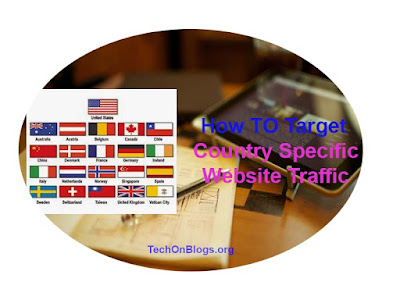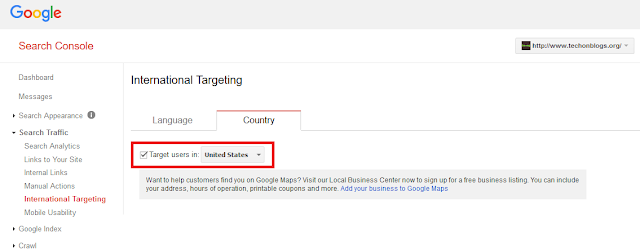I have shared lots of ways to drive traffic to your website, but we all know there are few countries like U.S, U.K traffic converts better in terms of advertising & affiliate sales, because of purchasing power of users from these countries. There are many factors which help you to get country specific traffic.I could actually work on targeting U.S based traffic, but over the t ime when ever I iterate my blog business plan, I make changes in target audience. And realize, it’s better to target Indian specific audience, because of less competition and moreover, demand:supply ratio.
ime when ever I iterate my blog business plan, I make changes in target audience. And realize, it’s better to target Indian specific audience, because of less competition and moreover, demand:supply ratio.
Now, this is my case, but I’m sure many of you who are blogging for Adsense income , you might want to target traffic from specific countries, and here are few things which you could do to improve the traffic from your target country. There is always one easy solution of buying country specific traffic, which works in the case of commercial sites, E-commerce sits, but for a blog, going natural is the best way.
In this post, I will share some ideas that are likely to help you improve the traffic from your target country.
Ways Of Driving Country-Specific Traffic:
1. Domain Name
Top level domain extensions like .com and .org usually rank higher on global search engines, but in order to have your blog or website target a specific country, buying a country-specific domain is always a good idea.
You may notice that most Aussie bloggers are using the .au domain extension, and they rank pretty high in Australian Google. Similarly for India, you can target .in or .co.in as your domain extensions with good results in India. For traffic from the U.K. (United Kingdom), grab a .co.uk domain extension for the best results.
In an effort to preserve your brand, you can also buy other TLDs like .com or .org. But one major disadvantage of this idea is that you will find it very hard to rank on other country-specific search engines. So, if your goal is clear and you know your target audience, a country-specific domain extension is your best bet.
Here you can find a list of generic TLDs.
2. Google Webmaster Tool Geo-Targeting
Google Webmaster Tool, a free tool from Google for bloggers and webmasters, will be very helpful to a blogger or webmaster seeking country-specific traffic. This tool allows you to set which country your website is targeted to, which helps you get traffic from that targeted country.
Log in and verify your website in the Google Webmaster Tool, and under Configurations > Settings you can specify which country you wish to target.
3. Web Hosting Server Location
Example:
- U.S.-based servers: Bluehost, SiteGround
- India-based servers: Bluehost India.
Other factors like CDNs also help to speed up your website in different countries, but in order to remain focused on your target, host your website only in the country whose traffic you’re targeting.
This will ensure that your website will load faster in that country due to the server’s IP, and search engines bots will be able to determine the location of your server.
All of this will help your site to rank higher in your target country.
4. Backlinks
For example, if your target audience is in the U.K., try to get more backlinks from U.K.-based websites.
You can get country-based backlinks by taking advantage of guest blogging opportunities, or by spending some time learning the art of blog commenting. Both methods are proven and Penguin-safe… if done properly.
5. Content Level Targeting
Additionally, the kind of content and language you are using in your articles will also determine the ranking of your website.
We all know that readability is a known SEO factor, and if your language is following Indian standards, targeting U.S. traffic will be very difficult. For this reason, you need to be sure to improve your language for the specific country whose traffic you’re targeting.
You can also hire writers or editors from that specific country who have excellent writing and grammatical skills in that country’s language.
6. Local SEO Using Google Places
Claim your business in Google Places, and add all related information such as address, phone number, etc. This will help Google to determine the location of your business.
You can also create social media profiles on various websites, and fill out the information in an effort to help you to get more local citations. You can use Knowem to check the availability of social media profiles.
7. Submit Website To Local Search Engines & Directories
For country-based traffic, you should submit your website to local search engines and local web directories. This will eventually become a very useful tool for getting country-specific backlinks, which will become a significant factor in determining the geo-location of your traffic.
8. Google Trends
For example, the keyword 160by2 is very popular in India, but not in the rest of the world.
Try to find keywords which are popular with the audience in your target country, and craft a content strategy based on that.
For example, most iPhone blogs will have large chunks of traffic from the U.S. or the U.K, as the iPhone is more popular in those countries when compared to Asian countries.
Track Keyword Progress In Country-Specific Searches:
Next, you will need to keep track of the keyword’s progress in your target country. This will help you to find out which strategies are working and which are not.
When you identify a strategy that works, you can focus on that strategy and work on it to push it to the next level.
You can use SEMrush to check keyword rankings in particular countries.
Whenever you are writing a business plan for your blog, your targeted country should be at the top of your priority list. This will help you to efficiently plan your content marketing and guest blogging campaigns.



